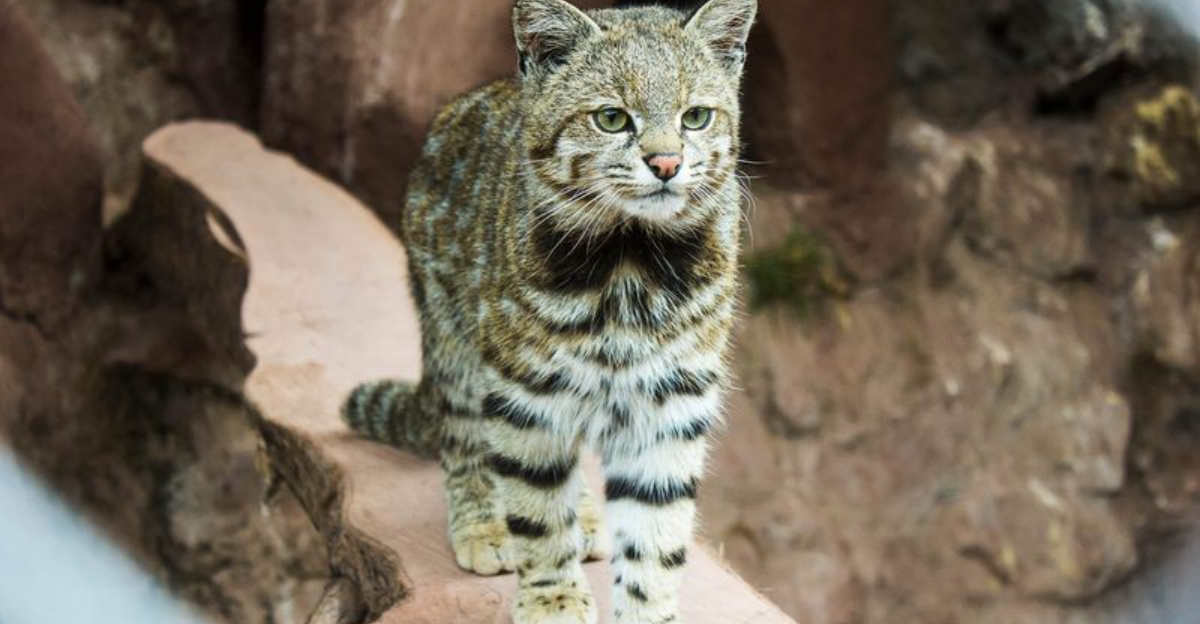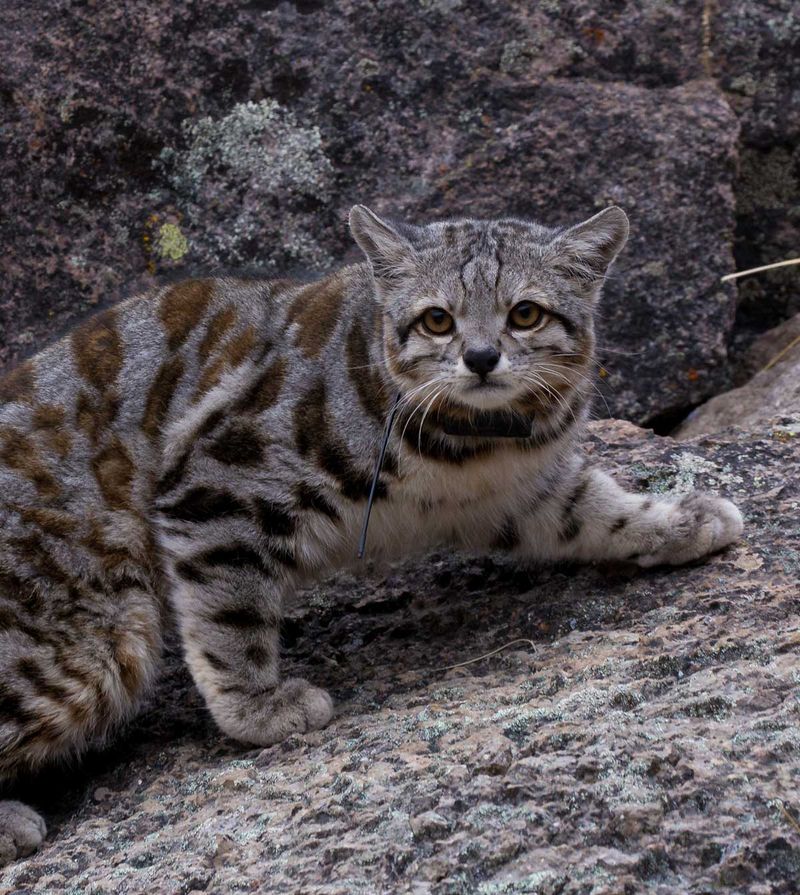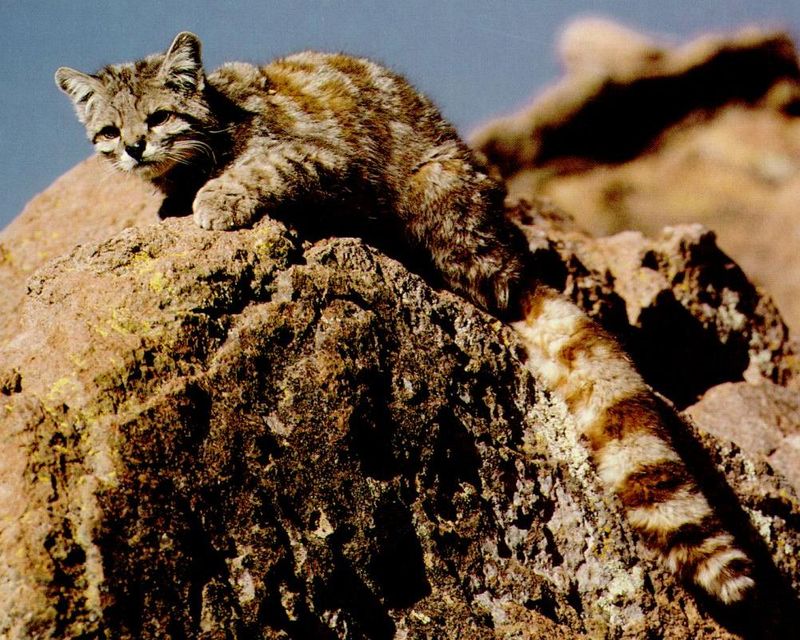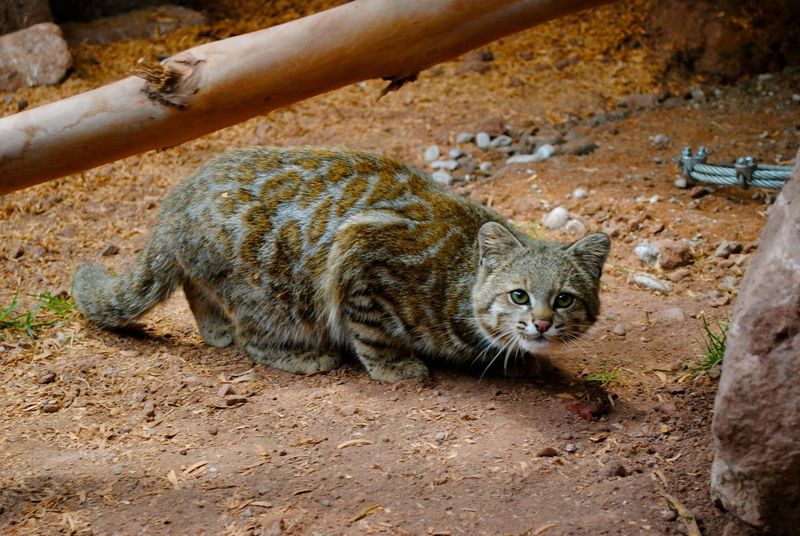📖 Table of Content:
Tucked away in the remote, wind-swept peaks of the Andes, a new wild feline has stepped into the scientific spotlight—reshaping our understanding of mountain ecology and biodiversity. In early 2023, conservationists announced the discovery of a previously undocumented species of wild cat, bearing a close resemblance to the elusive Andean Mountain Cat (Leopardus jacobita). This finding, confirmed through advanced DNA analysis, has brought fresh urgency and wonder to the study of one of the most endangered and mysterious carnivores in the Western Hemisphere.
The Andean Mountain Cat, long known as a “ghost of the Andes,” remains one of the rarest felines on the planet. With fewer than 1,500 individuals estimated in the wild, sightings are so scarce that even lifelong researchers have only glimpsed them a handful of times. Found across Peru, Bolivia, Chile, and Argentina, this animal lives in some of the most inhospitable and rarely traveled terrain on Earth. Yet even with its camouflage and reclusive tendencies, the new discovery and increasing awareness offer hope for both scientific insight and cultural appreciation.
In this article, we explore seven critical and fascinating facts about this newly identified mountain cat species. From its unique habitat and appearance to its cultural significance among Indigenous peoples, each element of this cat’s story reveals something new about resilience, adaptation, and the wild secrets still hidden in our world. Let’s journey into the Andes and get to know one of Earth’s most enigmatic felines.
1. Newly Identified Species
Recently, biologists were astonished to uncover a genetically distinct population of wild cats in the Andes, previously mistaken for the already rare Andean Mountain Cat. Genetic sequencing revealed enough variation in the DNA to suggest it’s a separate species or subspecies, ushering in new scientific exploration. This discovery adds a vital piece to the puzzle of South America’s ecological diversity, particularly among high-altitude mammals. Unlike many other wildlife announcements, this one was based on conclusive genetic and morphological data. Research teams from multiple countries collaborated on the effort, marking a rare win for international wildlife cooperation. The find underscores the importance of remote regions, which still hold biological secrets despite modern mapping. With this milestone, researchers have initiated further studies to understand the new species’ behavior, diet, and conservation needs.
2. High-Altitude Habitat
Towering above 3,000 meters in elevation, the Andes create an unforgiving home that only a few creatures can endure—and the Andean Mountain Cat is one of them. This high-altitude environment is marked by rocky cliffs, sparse vegetation, and plummeting temperatures. Few predators dare to establish territories here, making this cat’s presence all the more impressive. Adaptations like thick fur and powerful lungs help it survive in low-oxygen conditions. While much of the terrain is uninhabited by humans, growing tourism and mining threaten to encroach on these cats’ isolated domains. Conservation efforts are often complicated by the rugged geography, which makes data collection and tracking extremely difficult. Yet, it is precisely this isolation that has helped preserve the species from total disappearance—at least for now.
3. Distinctive Appearance
Gracefully camouflaged in pale silvers and grays, this feline looks like it was designed by the mountains themselves. Its fur coat features delicate stripes and spotted patterns that blend perfectly with Andean rock formations. A signature trait is its impressively long and bushy tail, ringed with dark bands and often used for balance on steep cliffs. Measuring up to 85 centimeters in body length, with tails that nearly match, it presents a powerful yet elegant profile. These physical features also help regulate body temperature and navigate treacherous terrain. Observations suggest it has slightly denser fur than its cousin, the pampas cat, which shares some of its range. With every image captured on camera traps, scientists grow more fascinated by this species’ visual distinctiveness.
4. Solitary and Elusive Behavior
Silent and solitary, the Andean Mountain Cat rarely appears more than a blur on a hidden camera trap. It is considered one of the most elusive wild cats in the world, with extremely limited sightings in the wild. Preferring a lone existence, it generally hunts and travels alone, avoiding even members of its own species. Scientists have struggled for years to gather reliable behavioral data due to its cryptic habits. Unlike more social wild cats, this species doesn’t seem to communicate through vocalizations or markings with any regularity. Sightings are so rare that each one is considered a significant data point in long-term ecological studies. Its secretive behavior continues to baffle and intrigue biologists, who hope new technologies may eventually lift the veil on its private world.
5. Diet Specialization
Focused and efficient, the Andean Mountain Cat has a narrow dietary niche that reflects its specialized hunting strategy. Chief among its prey is the mountain viscacha, a rodent resembling a rabbit, which makes up more than half of its diet. It also preys on other small mammals and highland birds, depending on seasonal availability. This specific diet limits its range to areas where these animals are abundant, further narrowing its habitat. Hunting in sparse, rocky environments, it uses stealth and sharp reflexes to ambush prey. With limited food sources in the Andes, maintaining balance in the local ecosystem is critical for its survival. The reliance on a few key species also makes it vulnerable to fluctuations in prey populations. Protecting these prey animals is therefore essential to the broader conservation of the cat itself.
6. Endangered Status
Gravely threatened, the Andean Mountain Cat has earned a place on the IUCN’s Endangered list, with population estimates dipping below 1,500. Habitat fragmentation, driven by expanding human development, is a major contributor to its decline. Another significant threat is retaliatory killing by farmers who mistakenly believe the cats attack livestock. In truth, their prey mostly consists of rodents, making them beneficial to local agriculture. Despite this, lack of awareness and misinformation continue to pose problems. Conservationists are pushing for stronger legal protections, wildlife corridors, and educational outreach. International organizations have also launched camera-trap and tagging programs to gather data. But unless proactive efforts are scaled up, this highland predator may soon vanish altogether.
7. Cultural Significance
Celebrated in folklore, the Andean Mountain Cat holds a spiritual role in many Indigenous communities, particularly the Aymara and Quechua peoples. Revered as a mystical guardian of the mountains, its presence is seen as a sign of natural balance. Traditionally, it was believed to possess powers of protection, and sightings were often interpreted as omens or blessings. Cultural respect for the cat runs deep, although modernization has diminished some of these traditional views. Local beliefs could be key to conservation strategies, as communities may protect what they consider sacred. Conservation groups are working to integrate Indigenous knowledge into modern wildlife protection plans. The fusion of science and spirituality may be one of the most promising avenues for preserving this enigmatic creature.







